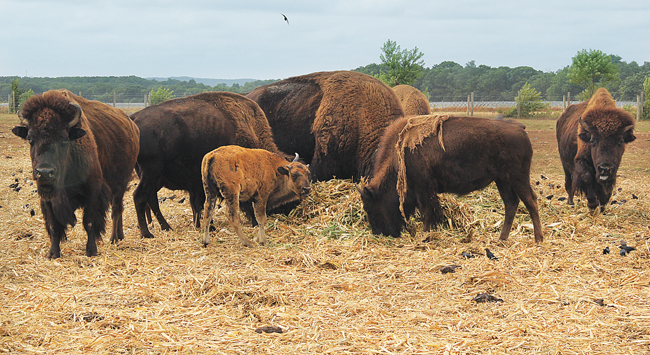Mild summer made for ideal conditions for farmers

The dog days of summer weren’t very dogged this year, at least not in terms of 90-plus degree days. That, combined with a lack of rain, created some ideal conditions for local produce and livestock farmers.
“Overall it has been tremendous for growing,” said Joe Gergela, executive director of the Long Island Farm Bureau. “The quality of produce and fruit is unbelievable, actually. Just really magnificent crops.”
According to data from the National Weather Service, the East End’s average temperatures for June, July and August were 71, 75 and 72 degrees, respectively — in tune with historic averages of 69, 74 and 73 degrees. The readings were taken at the agency’s weather station in Islip.
“Even though we didn’t have any 90-degree days, we were a little bit warmer than the norm,” said Patrick Reiche of the NWS.
When it came to rain, however, Mother Nature came up short.
Historically, averages of 4.24, 3.47 and 4.64 inches have fallen during the three summer months. But this year, according to NWS data, just 1.79 inches fell in June and 2.96 in July. August numbers measured at Islip were not fit for comparison, experts said, because the data was skewed by a storm that hit farther west.
Riverhead grower Phil Schmitt of Schmitt Family Farm said he would rather experience drought-like conditions than have to deal with an excess of precipitation.
“I’d rather be in control,” he said, while acknowledging that it can be expensive to constantly irrigate fields.
In cooler weather, Mr. Schmitt said, growers do have to worry about blight or mildew, which affected some of his basil crop. It is compounded by excess amounts of moisture.
“When the disease pressure is down, I’ll take it,” he joked. “Overall I think everything was really well controlled.”
The cooler weather also provided more comfortable conditions for the buffalo at Riverhead’s North Quarter Farm, said owner Ed Tuccio.
“We’ve had minimal problems with flies,” Mr. Tuccio explained. “The flies really irritate them, but this year it hasn’t been an issue. Really, it’s been a great year for raising them.”
Mr. Tuccio, who has hundreds of bison at his Roanoke Avenue farm, said the lack of rain translated to very low mortality rates among newborns. With minimal stagnant water lingering in his fields, he hasn’t had the usual issue of dealing with the parasitic disease Coccidiosis, which affects the animals’ intestinal tract and can lead to stillbirths.
“We usually lose a certain percent, but this year it’s been very minor,” he said. “I would say it partly has to do with the weather.
“You get it when you have damp places in your field. It gets on their feed and they ingest it,” he said. “But this year, we have a lot of babies. They are really doing well.”
But the dry conditions weren’t advantageous for all local growers.
Hay production at McCall’s Ranch in Cutchogue has been minimal, Russ McCall explained Friday. Since hay isn’t typically irrigated, the lack of rain also led to a lack of growth.
While Mr. McCall’s 50 cattle usually forage on hay in his fields through October, his hay stocks are already depleted.
“You need an acre of hay for each cow, and I have an acre and a third for each, but the cows are already finishing up what hay we do have left,” he said. “I am going to have to bring in hay to supplement our stock and get them through until November.”








